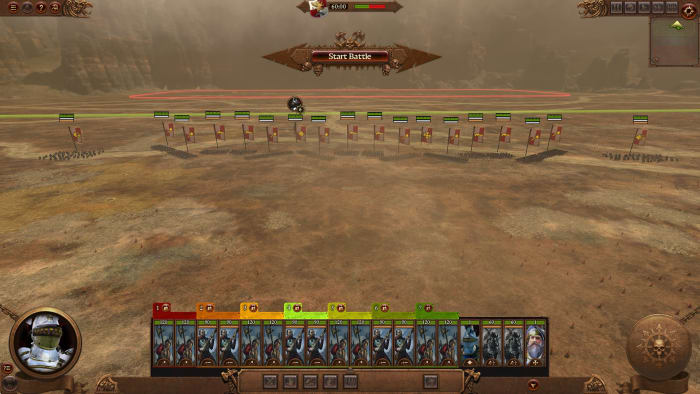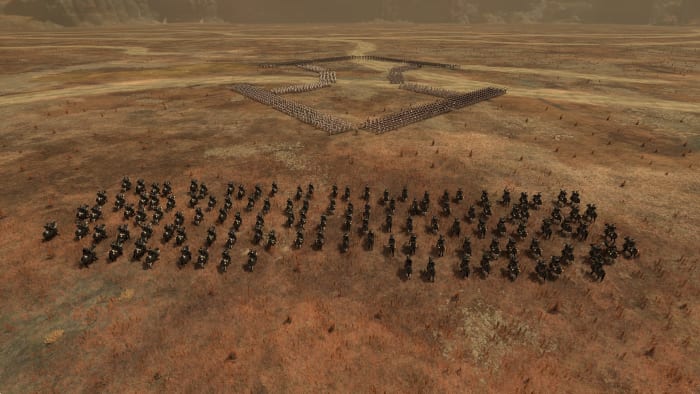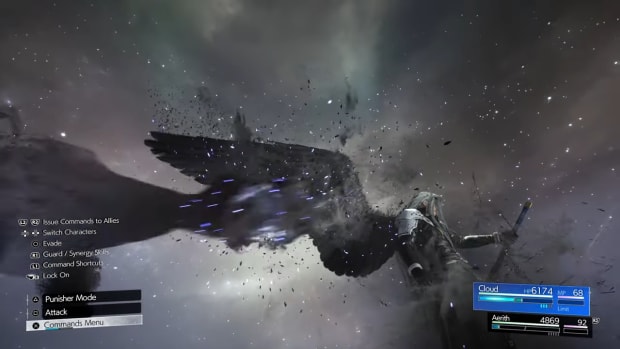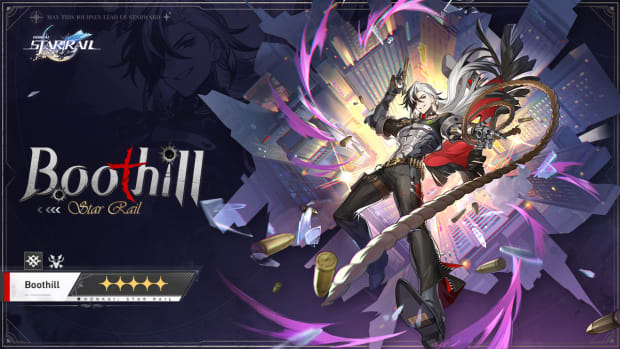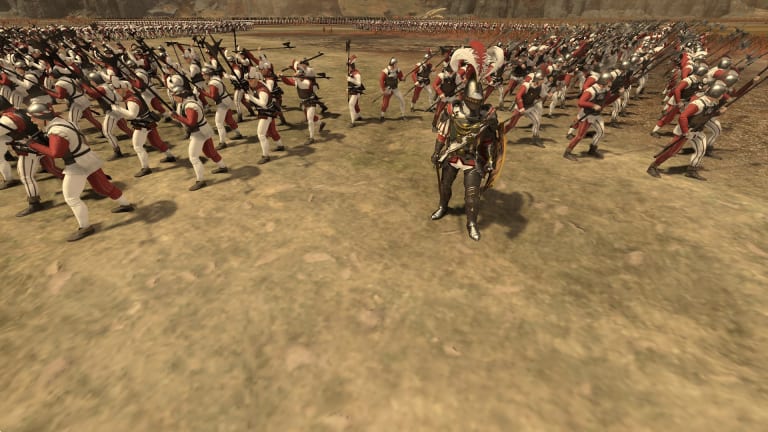
Total War: Warhammer 3 – best formations for ranged units

Getting the most out of your gunpowder units in Total War: Warhammer 3 can be a bit tricky – they need direct line of sight to the enemy, which makes positioning them without exposing them to a high level of danger a difficult task. However, ranged units like the Empire’s Handgunners and the Chaos Dwarfs’ Blunderbusses are devastating when being able to fire into enemy ranks, so finding a way to give them free shots is paramount to success.
Looking for a high ground like the ridge of a hill and positioning your gunpowder units up there with your melee infantry at the foot is one of the most effective ways of deploying these troops. They’ll have sight of the enemy the entire time and will be able to fire into their formation without the risk of hitting your own units. However, not every battle will offer you the opportunity to place your host in such an advantageous position.
To be less dependent on terrain that favors you, you’ll need to use a formation that always works – and there is one way to position your army that fulfills that important criterion: the chevron formation.
Learn how to use the chevron formation in Total War: Warhammer 3 to unleash the full power of your ranged gunpowder units in this guide.
Total War: Warhammer 3 – how to use a chevron formation
Usually, Total War: Warhammer 3 deploys your army in a straight line formation at the start of a battle, though it sometimes saves formations in a campaign when you fight with the same army composition repeatedly.

Usually, the game will deploy your army in a simple line formation. This would be fine for units such as Crossbowmen.
Creative Assembly
To create a chevron formation, you require at least six pairs of ranged units and eight pairs of melee infantry. It’s wise to have at least two cavalry units and single-entity units on hand as well.
During the deployment phase of battle, form up your line like in the image below with pairs of melee infantry formed up at angles so as to form the triangular shape of a chevron, while the ranged troops are stationed in the space between. Your single-entity units, be they lords, heroes, warmachines, or monsters, should protect the spots where the chevrons meet and expose the flanks of the melee infantry. Form your cavalry on the flanks like you’d usually do.

Melee infantry is positioned at angles as to resemble chevrons, ranged troops are in the spaces between.
Creative Assembly
Once the battle has started, let the enemy come closer and fire one or two volleys of shots with your ranged troops. Then select them and retreat behind your melee troops through the gaps in your line.
Reposition the ranged troops in these gaps, in parallel and a bit behind to your melee line. This will allow your gunpowder troops to fire right into the flanks of enemy units attacking your melee units without risking friendly fire.

In phase 2 of the chevron formation, you retreat the ranged troops through the gaps and position them in parallel to the melee lines.
Creative Assembly
In theory, enemy close combat troops should not get through these gaps without being caught by your own units. In case they do get through, don’t panic: Redeploy your nearby ranged troops to hit this unit into its backs, quickly disposing of it. Your cavalry should busy the enemy cavalry or go after their ranged troops, whatever is applicable.




Total War: Warhammer 3 – how to use a diamond formation
If you face an enemy with an overwhelming amount of cavalry, there is another useful formation you should be aware of: the diamond. In this formation, your melee troops form two protective wedges with some gaps on the side, through which your ranged troops can fire.
Once again deploy your single-entity units at the weak spots where your pairs of melee units meet to protect these. Your cavalry, which is heavily outmatched in this scenario, should hide behind the diamond and try what it can to flank the troops attacking your formation.



These formations work with any ranged troops, not just those bearing gunpowder weapons, but they aren’t quite as necessary with types that don’t require direct line of sight.

